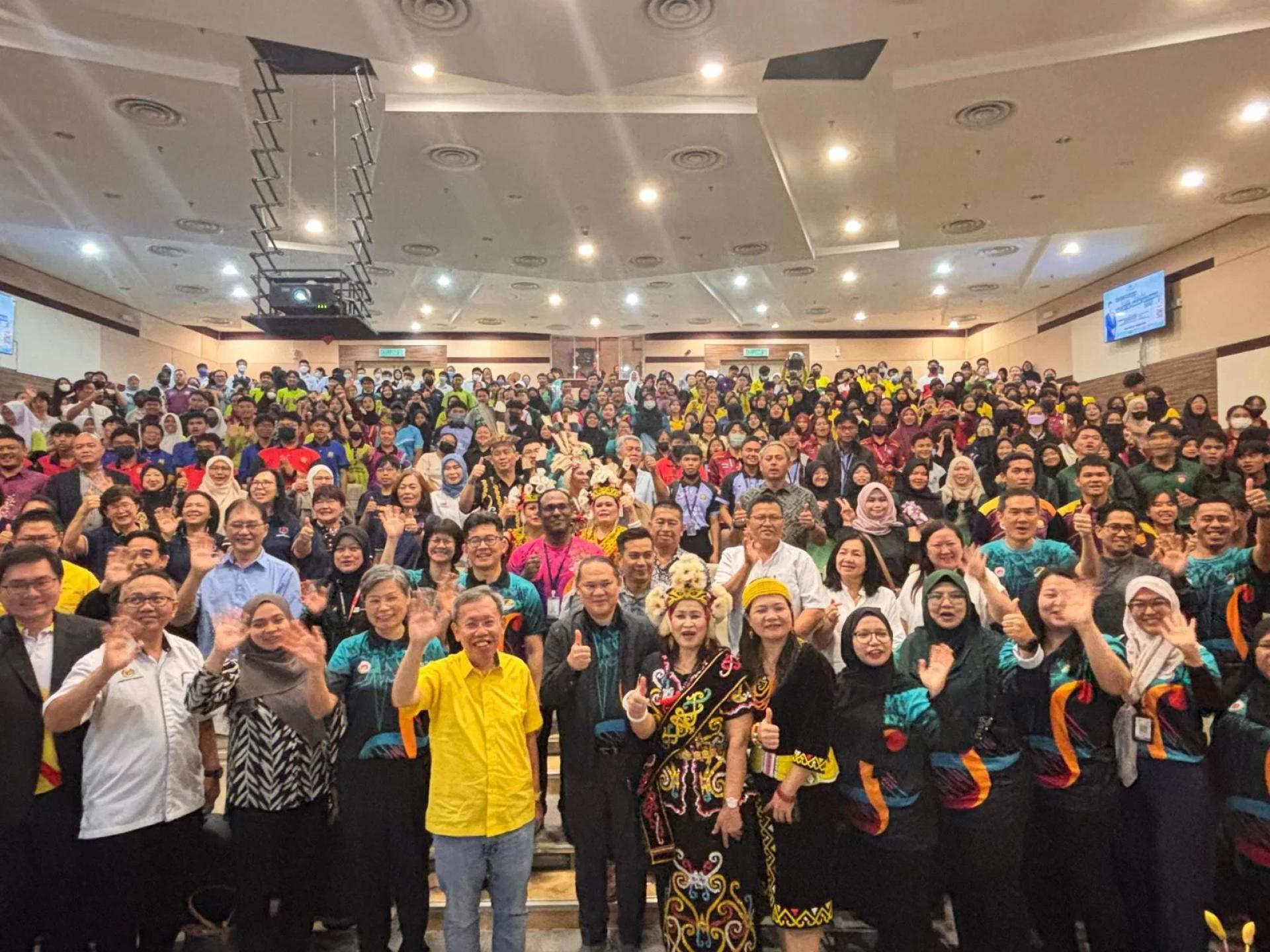KUCHING: Sarawak General Hospital (SGH) healthcare workers are the unsung heroes keeping the state’s healthcare system running despite being short-staffed, overworked and underfunded.
Deputy Premier Datuk Amar Dr Sim Kui Hian described SGH as the state’s top hospital, saying its scale of operations reflects its critical role in serving the community — recording an estimated 360,000 outpatients, 100,000 accident and emergency (A&E) visits, 62,000 admissions, 25,000 surgeries, and 10,000 births annually.
“Meanwhile, the hospital currently has about 5,000 staff including 700 doctors and specialists, 1,800 nurses, and over 3,000 support staff such pharmacists, radiographers, physiotherapists, speech therapists, lab technologists and others.
“Looking at these figures, we must appreciate our healthcare workers. Despite not being paid much compared to doctors overseas and having to cope with stress and burnout, they continue to serve with dedication.
“They are our heroes and we must show them our appreciation,” he said this during the SGH’s Open Day programme at the hospital here today.
Dr Sim, who is also the Public Health, Housing and Local Government Minister, added that SGH operates with 1,000 hospital beds and an annual budget of RM800 million.
“In comparison, the Royal Brisbane and Women’s Hospital in Australia has 1,000 beds, operates with 1,500 doctors and receives an annual budget of RM4.5 billion,” he said.
Based on Malaysian healthcare standards, he said Sarawak still needs an additional 2,000 hospital beds and 2,500 doctors to meet growing demands and national healthcare benchmarks.
“The Ministry of Health (MOH) visited seven hospitals in Sarawak this year, including SGH and recognised the urgent need to expand the workforce.
“They found that 11,000 more positions need to be created statewide — with 4,000 of them for SGH alone. This means that right now, 5,000 people are doing the work of 9,000.
“Isn’t that proof that our staff are truly heroes? Despite all these limitations, SGH remains number one in so many areas,” he said.
With limited manpower and funding, Dr Sim said SGH continues to achieve national and international recognition.
“This hospital has been recognised as Malaysia’s top research hospital for the past three years, and was recently the first hospital in Asia Pacific selected by pharmaceutical company Roche to conduct first-in-human clinical trials for solid cancer treatments.
“These are world-class achievements by our people in Sarawak. Many may not know it, but this hospital has made a name globally,” he said.
He then reiterated the need for greater federal allocation to meet Sarawak’s healthcare needs.
“That is also why we continue to push for more under the Malaysia Agreement 1963 (MA63), and we want to take back our health autonomy for Sarawak,” he said.
“Meanwhile, the hospital currently has about 5,000 staff including 700 doctors and specialists, 1,800 nurses, and over 3,000 support staff such pharmacists, radiographers, physiotherapists, speech therapists, lab technologists and others.
“Looking at these figures, we must appreciate our healthcare workers. Despite not being paid much compared to doctors overseas and having to cope with stress and burnout, they continue to serve with dedication.
“They are our heroes and we must show them our appreciation,” he said this during the SGH’s Open Day programme at the hospital here today.
Dr Sim, who is also the Public Health, Housing and Local Government Minister, added that SGH operates with 1,000 hospital beds and an annual budget of RM800 million.
“In comparison, the Royal Brisbane and Women’s Hospital in Australia has 1,000 beds, operates with 1,500 doctors and receives an annual budget of RM4.5 billion,” he said.
Based on Malaysian healthcare standards, he said Sarawak still needs an additional 2,000 hospital beds and 2,500 doctors to meet growing demands and national healthcare benchmarks.
“The Ministry of Health (MOH) visited seven hospitals in Sarawak this year, including SGH and recognised the urgent need to expand the workforce.
“They found that 11,000 more positions need to be created statewide — with 4,000 of them for SGH alone. This means that right now, 5,000 people are doing the work of 9,000.
“Isn’t that proof that our staff are truly heroes? Despite all these limitations, SGH remains number one in so many areas,” he said.
With limited manpower and funding, Dr Sim said SGH continues to achieve national and international recognition.
“This hospital has been recognised as Malaysia’s top research hospital for the past three years, and was recently the first hospital in Asia Pacific selected by pharmaceutical company Roche to conduct first-in-human clinical trials for solid cancer treatments.
“These are world-class achievements by our people in Sarawak. Many may not know it, but this hospital has made a name globally,” he said.
He then reiterated the need for greater federal allocation to meet Sarawak’s healthcare needs.
“That is also why we continue to push for more under the Malaysia Agreement 1963 (MA63), and we want to take back our health autonomy for Sarawak,” he said.
